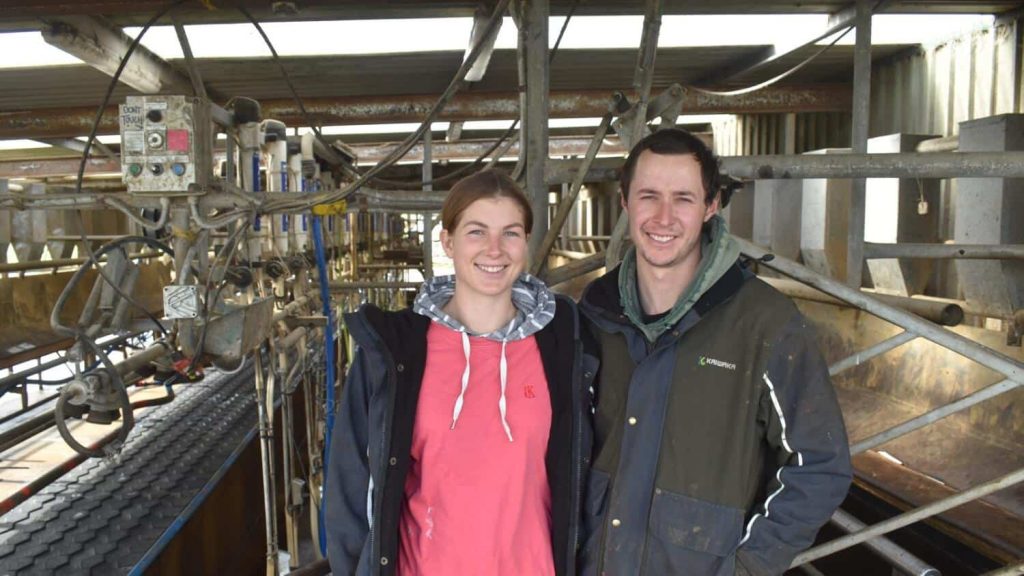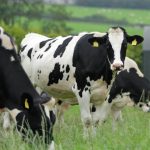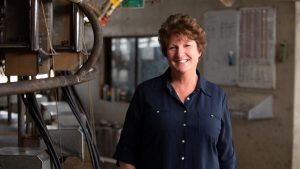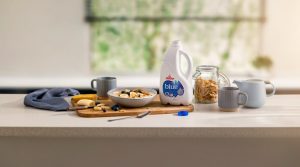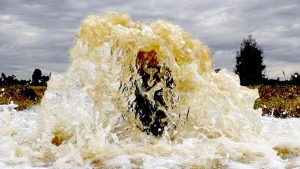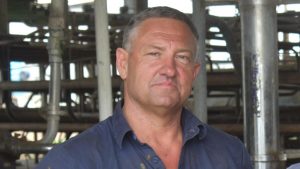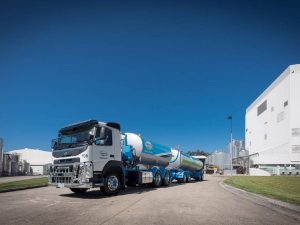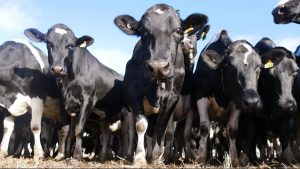
Josh Keightley and Remeny McCann faced some big challenges as they approached their first sharefarming agreement.
With mastitis and the herd’s cell count unacceptably high, the young couple knew they had to make some major adjustments to set off on the right foot.
They did, and the changes have worked perfectly. They launched into the next phase of their careers as sharefarmers on July 1 with a clean bill of health for their herd and the benefits of a fresh milk contract.
For the past two years, Josh has managed the farm owned by his parents Kirsti and Stu for more than 20 years. Remeny joined last year.
The farm is at Wallacedale in south-western Victoria.
They have started on a 30-70 agreement, contributing some calves, heifers, machinery and a lot of enthusiasm.
The New Zealand Jersey-Friesian cross herd produces well and suits the land.
“They’re a smaller stature which is good for us,” Josh said.
“They cost a lot less to feed and they produce very well for us.”
At the end of June, they were still producing about 16.5 litres, a good volume close to dry off. Last year they peaked about 25-26 litres but it was a down season and Josh and Remeny expect better results this year.
“We had a tough year with conditions, cell count, sub-clinical mastitis and trace element issues so we unfortunately had a lot of injured heifers,” Remeny said.
The reintroduction of copper bullets for heifers, changing the size of the milking machine shells for milking in the dairy and generally improving hygiene led to a dramatic turnaround in cell count and herd health.
They also culled heavily which saw the herd reduced by about 60 to 352. They hope to return to about 400 after this year’s calving and eventually peak around 410-415.
“We dropped our cell count from an average of 334 in November to as low as 116 and we haven’t been going over 200,” Josh said.
“We culled a lot of older cows. It was a really wet year and they were a bit copper and calcium deficient and it knocked them around.
“We know we are copper deficient in our land which gives them brittle bones so reintroducing the bullets has really helped.”
They supply Fonterra on a fresh milk contract so had to be strict about the cell count.
“We have to stick under 200 otherwise we get penalised,” Josh said.
The June average in 2023 was 117 compared to 175 at the same time last year.
“The changes we’ve made have been amazing,” Remeny said.
“We’ve improved hygiene in the shed, make sure the cows aren’t destroying the pastures and we keep everything as clean as possible and ensure the machinery is working properly.”
The fit-out change in the dairy was a big factor.
“We had shells that were made for big Holstein cows but we had little crossies. That was a huge change.”
In the scale of things, changing the shells and liners was only a small investment but it paid off.
“That led to a drastic change in the cell count because the cows milk out better and it gets the cell count down.”
They also reintroduced herd testing.
“When I started, there hadn’t been a herd test since 2018 but we’ve done 12 in the past two years,” Josh said.
“I’m big on data and knowing what’s going on. Without herd testing; you don’t know what your cows are doing.
“We had sub-clinical mastitis and clinical mastitis that wasn’t getting picked up in the shed and it spread like wildfire. We got back on top of it before calving which is due to start in mid-July for heifers and end of July for cows.”
Milking is now “a breeze” in the 30-a-side herringbone.
Remeny said the cows were good natured.
“I love animals. I was a nurse before I met Josh and came back into dairy. That nurturing side means I want to make sure our animals are treated well and have a good nature. My nursing background definitely helps in the shed.”
The farm has a 196ha milking platform boosted by a leased 27ha outpaddock.
Although it’s only one of four dairy farms in the area, Josh said the land was well suited to the enterprise.
“It’s beautiful volcanic soil that grows grass like anything and holds its moisture. It takes a few extra weeks to kick in but come spring it will take off and it will go longer.”
He is renovating from annuals into perennials, completing about 65 per cent of the farm this year.
“Each year we will do 20-30 hectares of perennials,” he said.
“Ideally in two of three years, we will only be topping up 20-30 per cent.”
“We aim to get more perennials. The pastures hold up pretty well but it has been hard the past couple of years because it has been so wet.”
They are excited to be starting their new sharefarming adventure, although there’s no time frame to go to 50-50.
“It’s super exciting but a bit daunting when you see the bills and look at it from the business side of things,” Remeny said.
“Being sharefarmers with Josh’s parents means not much will change because we already talk and collaborate a lot with them.
“We made our first purchase of 25 calves the other day which was exciting. We’ve got some we reared from last year so we now have 65 calves, a good start to our herd.”
